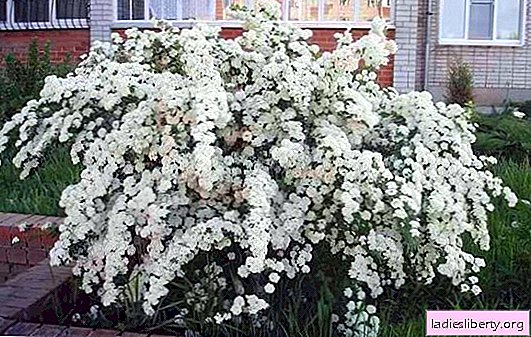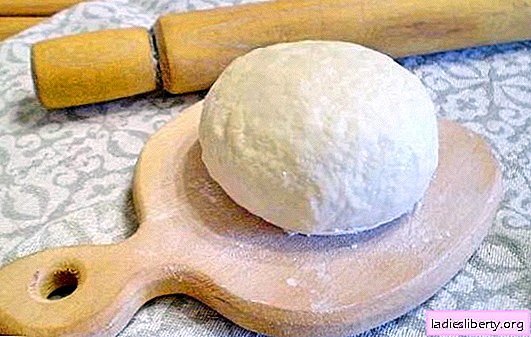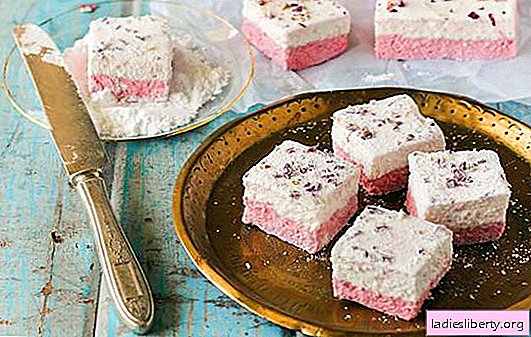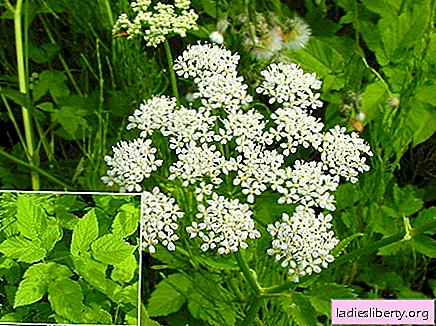
Spirea bush is attractive not only during flowering. Its beautifully curved shoots adorn the garden throughout the season.
It is not difficult to plant and grow spiraea, which attracts gardeners.
Features of planting spirea
Like any plant, spirea has its own growing characteristics. For full flowering, they must be considered:
• Shrub prefers soil consisting of deciduous humus and sod land. A portion of the sand is added to the two parts of the resulting soil to loosen the soil;
• Spirea is grown only in well-drained soil, as the shrub does not tolerate moisture stagnation, often suffers from root rot or dries in the winter;
• Do not deepen the root neck of the shrub so that it does not rot. Ideally, the root collar should be at ground level;
• Planting shrubs is carried out only in cloudy weather, and preferably in the rain. The optimal landing time is the second half of autumn, somewhere in the middle of September. Some varieties of spirea are planted in early spring.
Planting spirea in the spring is carried out early, until the buds have blossomed. At this time, only summer-flowering hybrids can be planted. When buying seedlings, pay attention to the state of the root system and the appearance of the plant. In well-developed healthy seedlings, the roots should be live, not over-dried, and the branches flexible with good buds. If the seedlings look suspicious, then it is better to refuse the purchase. What to do if planting stock has been stored for a long time in inappropriate conditions? It must be brought into a "human" form.

Long and overgrown roots are shortened, which facilitates planting and increases the survival rate of seedlings. If the root system is overdried or damaged, then you need to shorten the shoots, and soak the roots in water before planting. To do this, the seedling is soaked in a bucket of water for 24 hours.
Spirea planting: site selection and depth of the landing pit
Spirea is an unpretentious shrub, but not everywhere will bloom fully. The main condition for growing spirea is full lighting throughout the day. Choose a sunny area protected from cold winds. Keep in mind that the shrub grows quickly, gives a lot of basal shoots, so it needs enough space. If there is no possibility to allocate a lot of space, then root shoots are removed.

Landing pit on the site is prepared in advance. Its depth should be at least 60-70 cm, which is one third more than the size of the root system. Drainage from improvised materials is laid at the bottom of the pit with a layer of 15-20 cm. Part of the onions is covered with fertile soil mixed with sand, peat and leaf humus. During planting, seedlings form a mound, set a plant on it, the roots are spread on the sides. The pit is filled to the top with fertile soil, slightly compacting the ground, and watered abundantly. The root zone is well mulched with peat or humus.
Important! The root neck is necessarily placed at the level of the soil.
Autumn planting of spirea is carried out during the division of the bush. It is best to complete the procedure before the end of the fall. For propagation, young bushes are still used, whose age is no more than 5 years. Adult specimens do not tolerate division.
Since the shrub grows quite quickly, you need to consider the distance between plants. To create a hedge between the seedlings leave up to 70 cm. When planting spirea in compositions with thuja and other junipers around the plant leave up to 1 m, which will greatly facilitate the care of the shrub.
The secrets of caring for spirea
Shrub care is a pleasure for lazy gardeners, but some features will be useful to learn.
Spirea is a drought-tolerant plant, so it is watered extremely rarely. In rainy weather, shrubs can get along with natural rainfall. In the dry period, it is enough several times a season to water abundantly with spirea and mulch the soil.
Around young seedlings, the soil must be regularly loosened. In order for spirea to please flowering, it needs to be fed with a full-fledged mineral fertilizer. Top dressing is done twice a season: immediately after pruning and in the second half of summer.
How to prune spirea
The shrub needs a haircut, thereby forming a beautiful crown. A haircut is carried out taking into account all the features of the bush.
• In early-flowering varieties, only the tops of shoots that are frozen in winter are cut. Strongly shorten them is not necessary, since the spirea blooms on last year's shoots. After 7-8 years of cultivation, all shoots are pruned at ground level to renew the bush.
• Summer-flowering spirea pruned in early spring to the strongest buds. The more pruning, the more powerful the bush is formed. Every 5 years, the shoots are cut to a height of 25-30 cm. If, after such pruning, the bush lets out a weak shoot, then it must be completely replaced. The duration of cultivation in one place is 15 years.
In addition, in the spring and summer, as necessary, they carry out sanitary cleaning of the bush, cutting out all twisted, weak and dry branches.
Photo correct pruning spiraea

Pest control
When caring for spirea, one should not forget about diseases and pests that can annoy the bush. In most cases, spirea is resistant to diseases and pests, but is sometimes attacked by aphids and spider mites. To quickly get rid of pests, spraying with insecticides is used.
Among diseases, horse rot is more common. Follow the rules for growing shrubs, choose a suitable place for planting and be sure to drain the soil.
How to propagate a spiraea
If you decide to get spirea, then it is not necessary to buy seedlings. You can grow planting material yourself by taking a stalk from a neighbor in the country. In addition, spiraea easily and quickly multiplies by dividing the bush and layering. Let us dwell in more detail on each method.
The division of the bush is carried out in autumn or early spring, depending on the variety of perennial. Landing is carried out in the usual way, preparing the soil and the landing pit.
Cuttings of spirea are carried out throughout the season. Early flowering species are cut in the first half of summer, and later planting material from late flowering varieties is cut. The survival rate of cuttings is very high, even without the use of special preparations, which cannot but please gardeners.
For cuttings, annual straight shoots are selected, from which the lower leaves are removed. The upper leaves are cut off halfway. The lower cut of the handle is processed in the root or simply dipped with crushed ash. Prepared cuttings are planted at an angle of 45 degrees in a greenhouse. Care for spirea cuttings is simple, it is enough to water the plants at least 1 time in 3 days. With the onset of frost, plants are covered with dry foliage, an old wooden box is additionally installed on top. In this form, cuttings overwinter. In the spring, the shoots are transplanted to a permanent place.
Photo of ready-made spirea cuttings for planting

Propagating spirea by layering is simple. In the autumn, a semi-lignified shoot is dug in, and in the spring, the seedling is transferred to a permanent place. By that time, his own root system should be formed.

Important! Spirea seeds are propagated extremely rarely, since this is a rather complicated method. In addition, plants rarely retain their parental qualities.
As you can see, spirea is a perennial flowering shrub for busy gardeners. Planting does not take much time, and caring for the plant is simple.
However, despite the winter hardiness of the shrub, with the advent of autumn, it is better to fill it with dry leaves. This will save the perennial from freezing in snowless winters.











